For mobile communication, wireless base stations are installed all over the country. Smartphones communicate by connecting wirelessly to the radio base station. We will summarize the number of wireless base stations of Japanese mobile network operators (MNO: Mobile Network Operator) as of the end of September 2022.
Japan’s mobile network operators (MNOs) are the companies shown in the figure below. We will organize the number of base stations in operation for each mobile carrier by radio frequency band and system generaion (5G NR, 4G LTE, 3G). We will also organize the characteristics of wireless networks for each mobile communications carrier in terms of the number of wireless base stations.
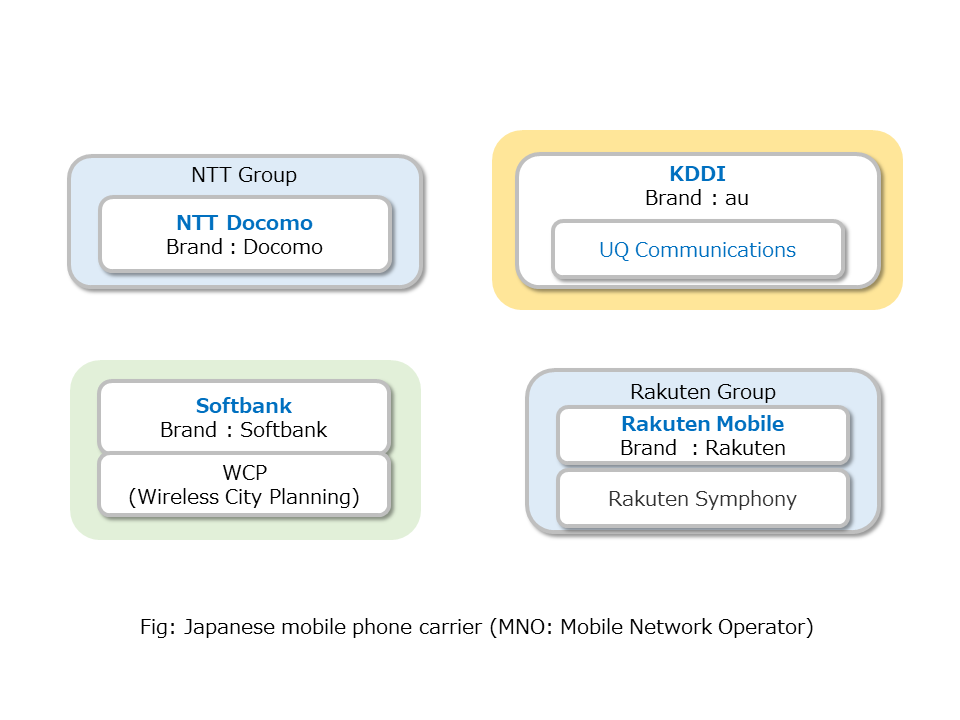
- Overview of the number of base stations and each mobile network carrier in Japan
- Overview of the number of base stations and mobile network carrier (Docomo, KDDI, Softbank, Rakuten) in Japan
- How to count the number of base stations
- Reference source for statistical information on the number of base stations (Japanese government release)
- End date of 3G service (KDDI, Softbank, Docomo) in Japan
- Analysis of the number of NTT Docomo radio base stations
- Analysis of the number of KDDI and UQ radio base stations
- Analysis of the number of radio base stations of SoftBank and WCP
- Analysis of Rakuten Mobile’s number of radio base stations
- Summary
Overview of the number of base stations and each mobile network carrier in Japan
Overview of the number of base stations and mobile network carrier (Docomo, KDDI, Softbank, Rakuten) in Japan
The number of wireless base stations of Docomo, KDDI, Softbank, and Rakuten carriers (MNO: Mobile Network Operator) as of the end of September 2022 is shown in the graph below. 5G (5th generation communication: 5G NR), 4G (4th generation communication: LTE), and 3G (3rd generation communication) each indicate the generation of mobile phones.
5G services just started in Japan in 2020, so the number of 5G base stations is still small according to the information as of the end of September 2022 (released by the Ministry of Internal Affairs and Communications in March 2022).
Below, the number of base stations for each mobile carrier is shown in graphs and tables.
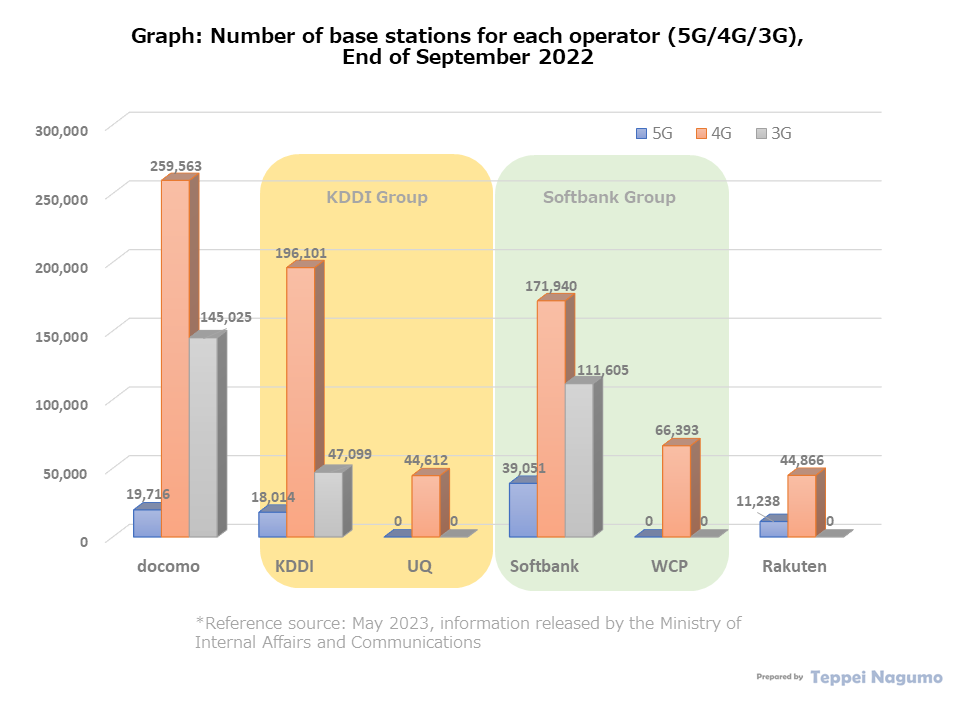
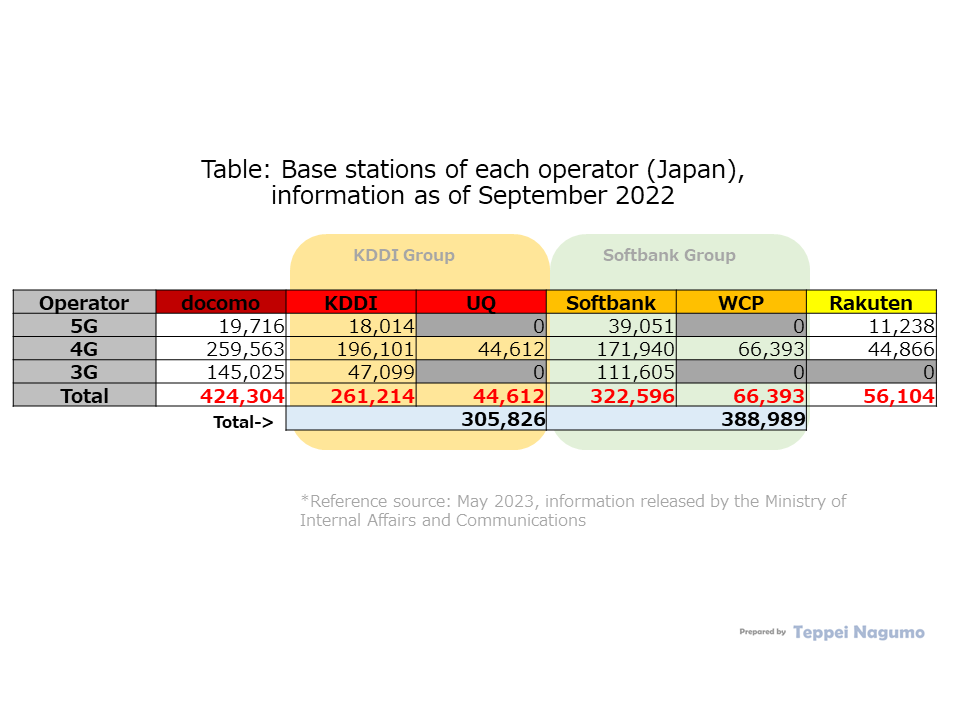
Please refer to the blog post (in Japanesae) below for the number of base stations of each operator in Japan as of the end of March 2021.
How to count the number of base stations
The method for counting the number of base stations of Japanese mobile network operators (MNO) in this blog article is as follows. Ultra-small base stations such as femto-cells are not counted in the base station statistics.
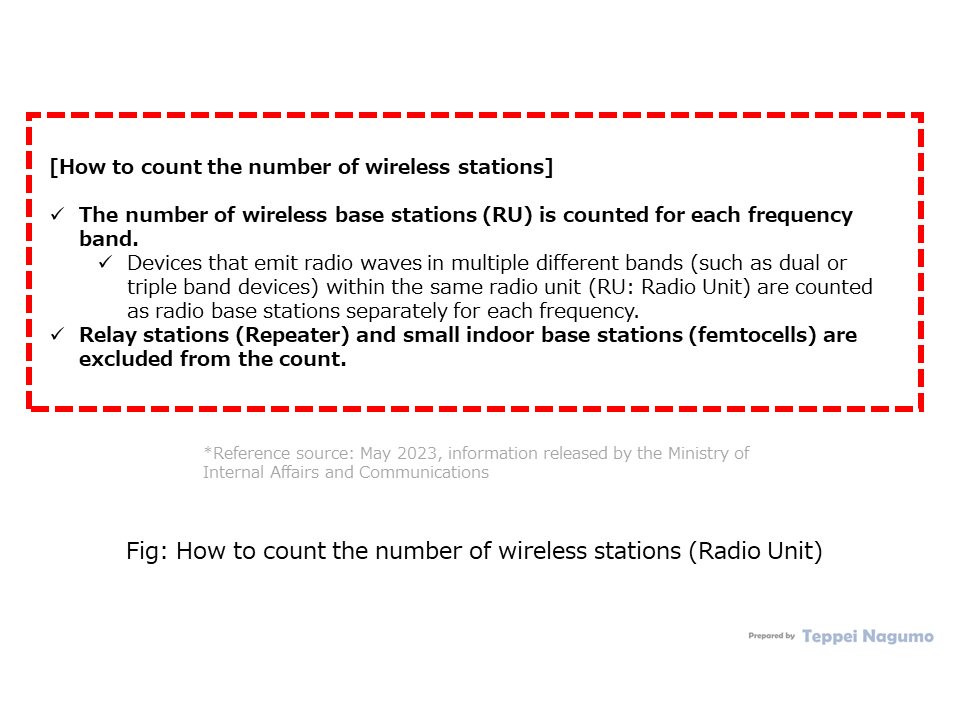
The figure below shows the base stations that are counted in this blog based on the wireless cell size of general base stations.
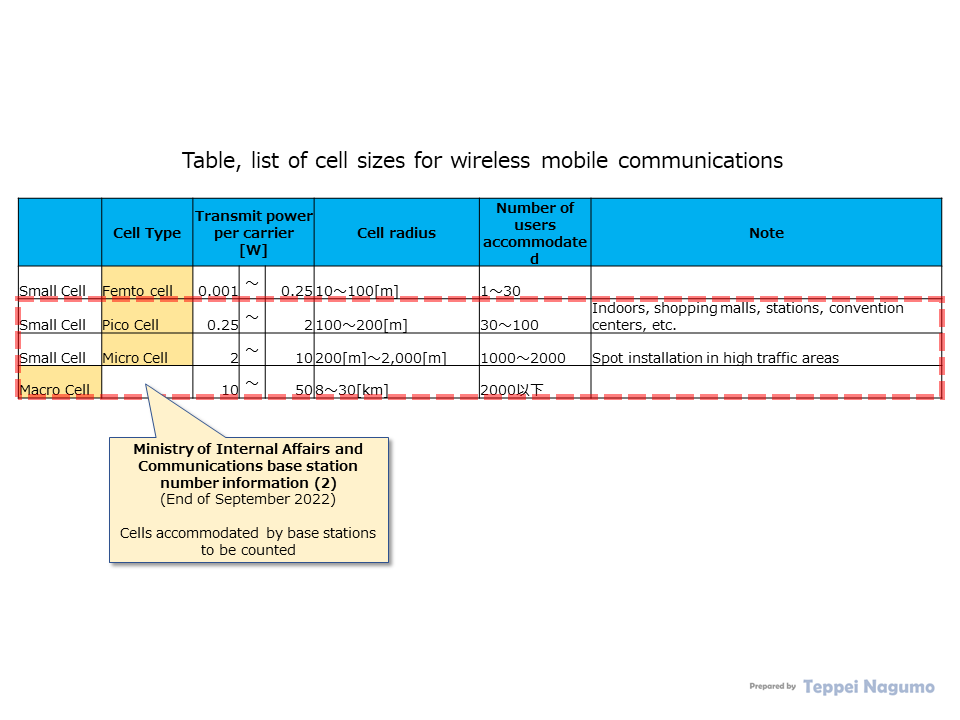
Reference source for statistical information on the number of base stations (Japanese government release)
The number of base stations of Japanese mobile network operators (MNO) in this blog article is based on information published by the Ministry of Internal Affairs and Communications. The graph is based on the following information released by the Ministry of Internal Affairs and Communications.
This is base station information as of the end of September 2022, so the number of 5G base stations of each mobile communication carrier has increased considerably since then.
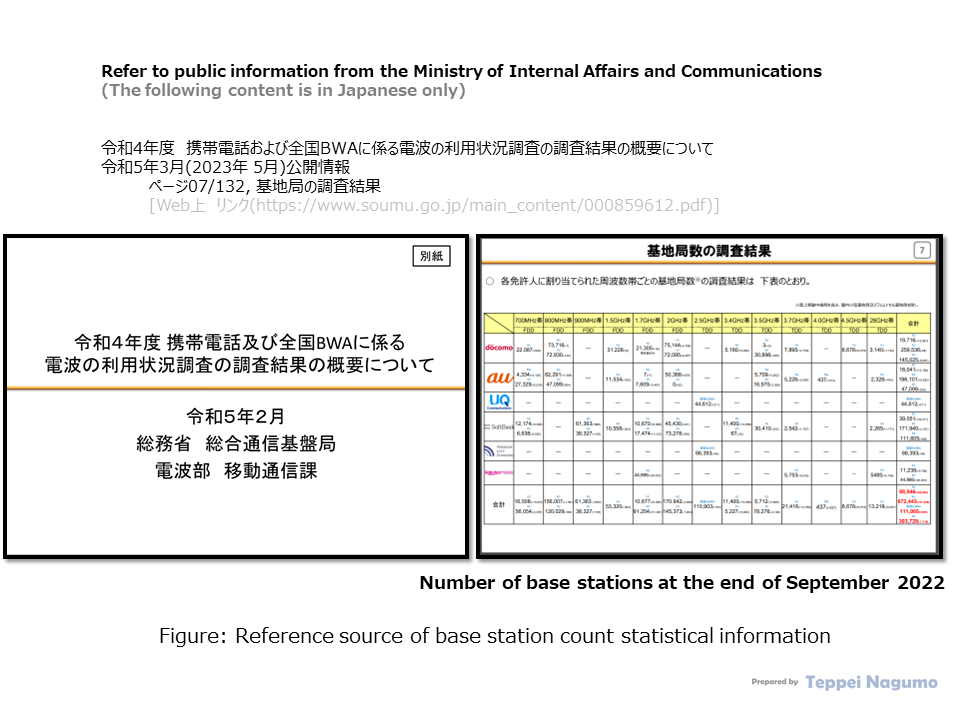
In this blog post, we will organize and analyze the number of base stations for each operator as of the end of September 2022. As shown in the diagram below, the end of September 2022 will be 2 years and 6 months since the start of 5G commercial services.
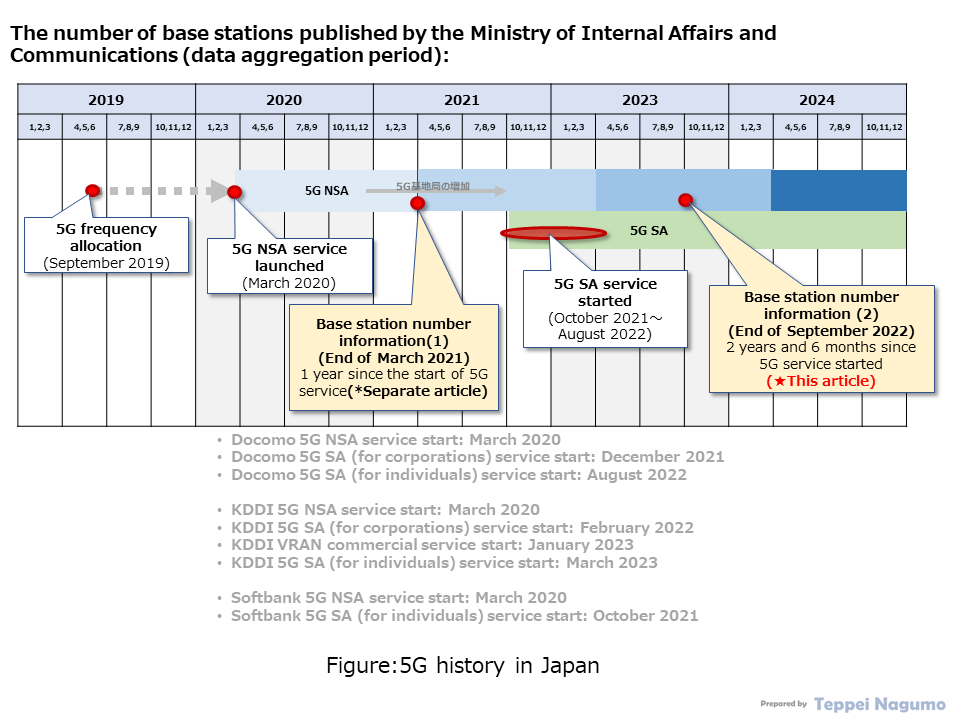
End date of 3G service (KDDI, Softbank, Docomo) in Japan
KDDI’s 3G service will end in March 2022. NTT Docomo and Softbank are also planning to end their 3G services. (See figure below)
3G services operate in the 2.0GHz band and the 800MHz/900MHz band.
[Additional note] Due to the effects of the Noto Peninsula Earthquake (January 1, 2024), SoftBank has postponed the end of 3G services to April 15, 2024. [Softbank press-release, link, (Japanease)]
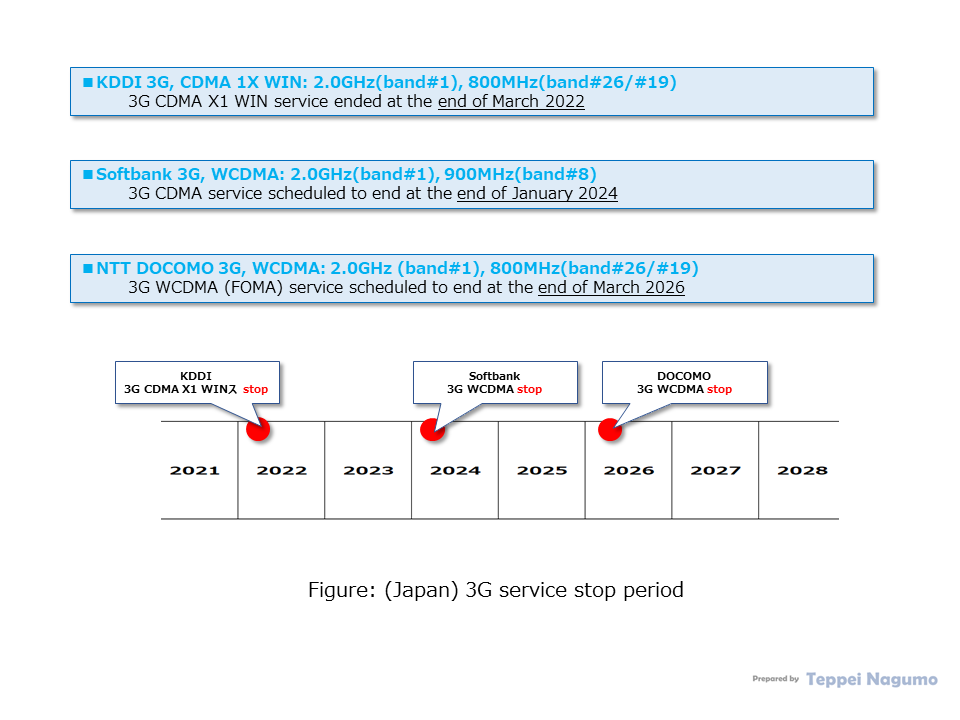
Analysis of the number of NTT Docomo radio base stations
Number of NTT Docomo base stations (by communication method generation 5G/4G/3G and band)
We have organized information on NTT Docomo’s base stations counted by communication method generation (5G/4G/3G) and wireless band (band) in a table. (See table below)
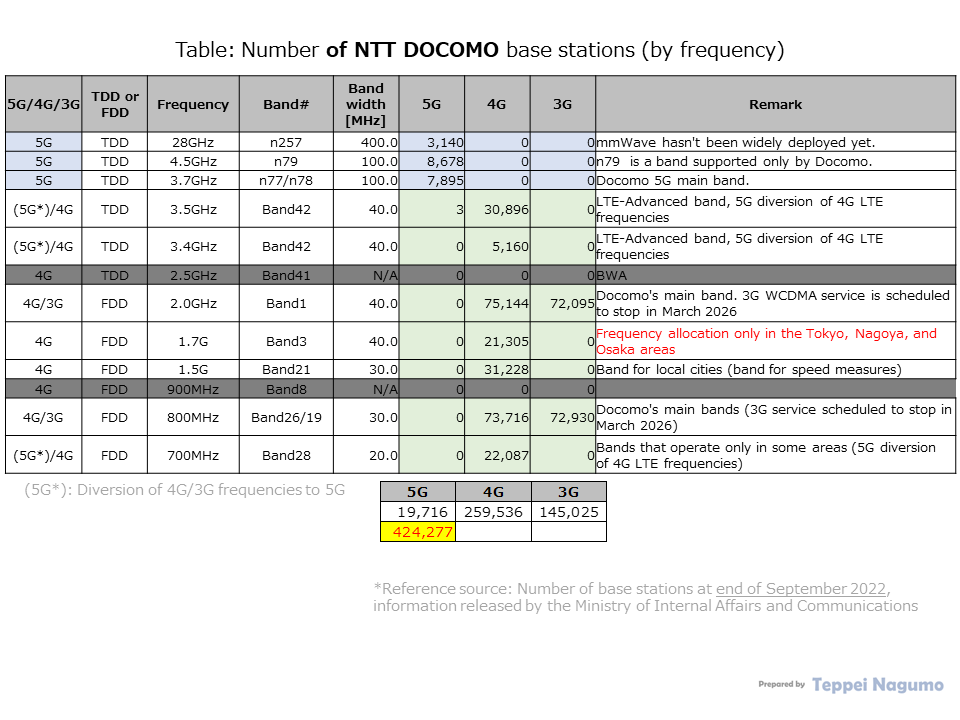
NTT Docomo’s number of base stations (by generation 5G/4G/3G and band) graph and its characteristics
Below is a graph of information that counts the number of NTT Docomo base stations by generation (5G/4G/3G) and wireless band. (See figure below)
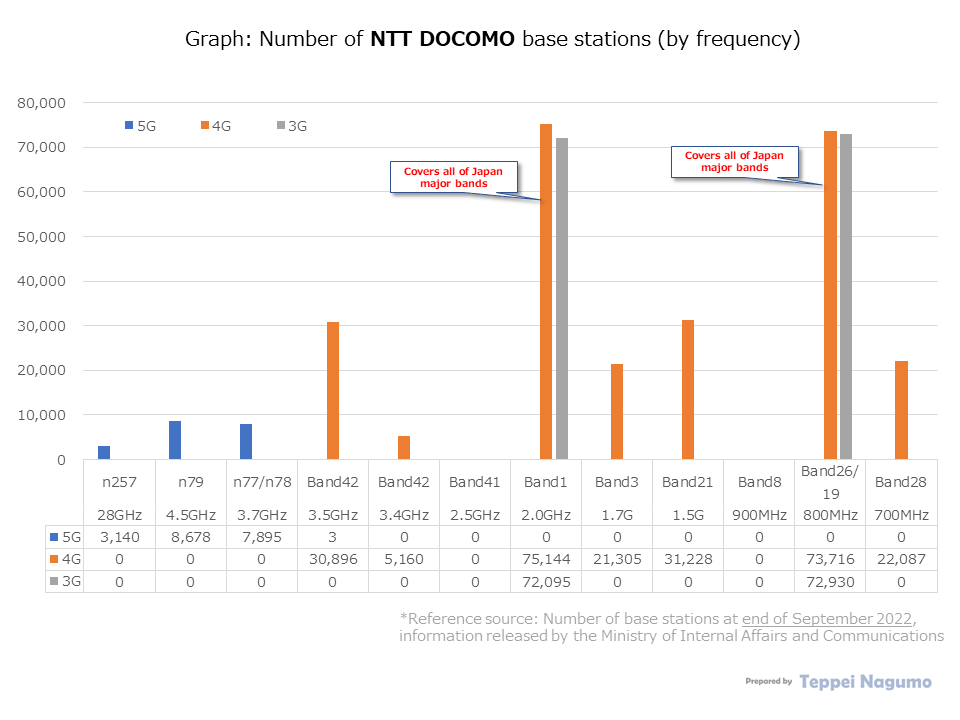
The 2.0GHz band (band 1) has a large number of base stations, approximately 80,000 for 4G LTE and approximately 72,000 for 3G WCDMA, and covers all of Japan with base stations in this band.
The 800MHz band (Band 26/Band 19) also has a large number of base stations for 4G LTE, approximately 74,000, and 3G WCDMA, 73,000, and covers all of Japan with base stations in this band.
Analysis of the number of KDDI and UQ radio base stations
Number of KDDI and UQ base stations (by generation 5G/4G/3G and band)
We have organized information on the number of KDDI base stations by generation (5G/4G/3G) and wireless band (band) in a table. (See table below)
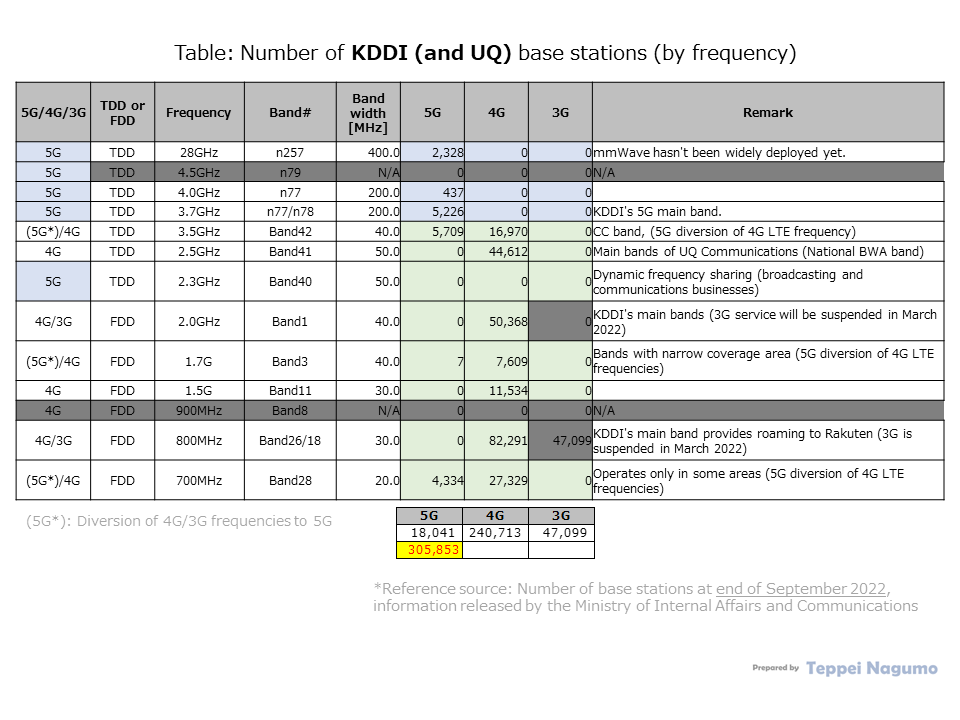
Number of KDDI and UQ base stations (by generation 5G/4G/3G and band) graph and its characteristics
Below is a graph of information counting the number of KDDI base stations by generation (5G/4G/3G) and wireless band. (See figure below)
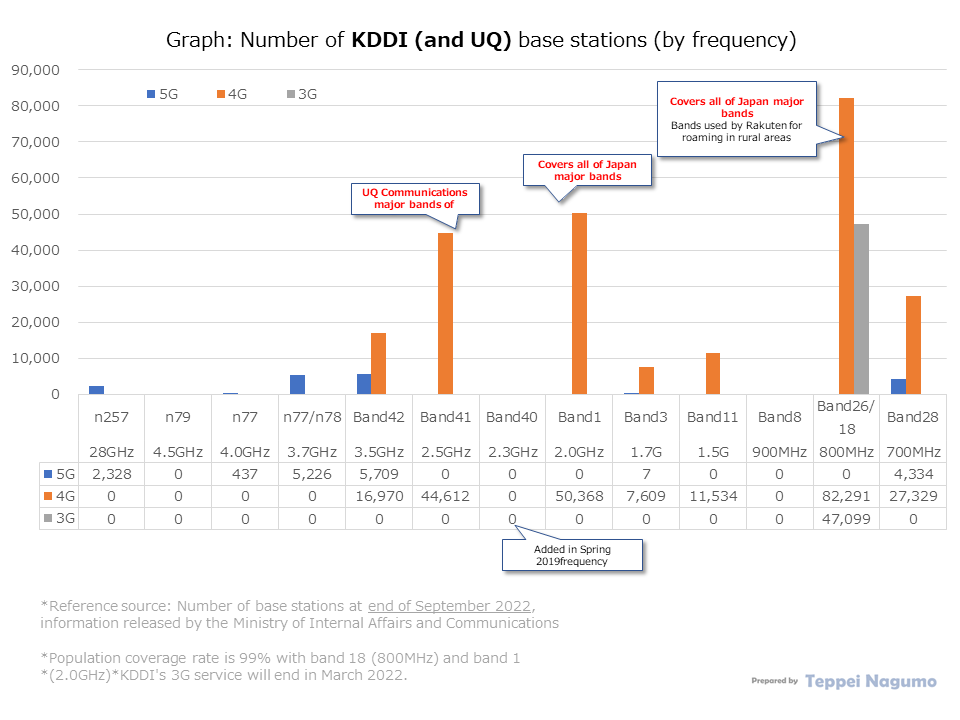
The 2.0GHz band (band 1) has a large number of 4G LTE base stations, approximately 50,000, and covers all of Japan with base stations that perform wireless communication in this band.
The 800MHz band (Band 26/Band 19) also has a large number of 4G LTE base stations, approximately 80,000, and covers all of Japan with base stations that perform wireless communication in this band. In terms of frequency characteristics, KDDI’s 800MHz band (band 26/band 19) has the widest wireless coverage. Therefore, the band that KDDI lends to Rakuten for roaming is the frequency of this band.
Analysis of the number of radio base stations of SoftBank and WCP
Number of SoftBank and WCP base stations (by generation 5G/4G/3G and band)
This table shows information on the number of SoftBank base stations counted by communication method generation (5G/4G/3G) and wireless band. (See table below)
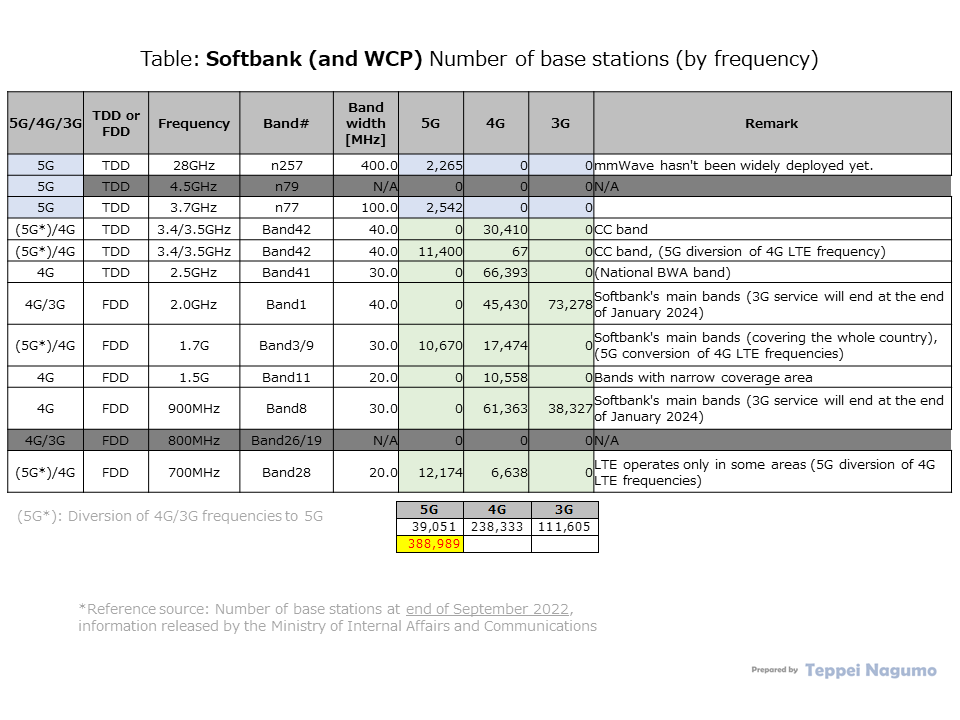
Softbank and WCP base station number (by generation 5G/4G/3G and band) graph and its characteristics
Below is a graph showing the number of SoftBank base stations counted by communication method generation (5G/4G/3G) and wireless band. (See figure below.)
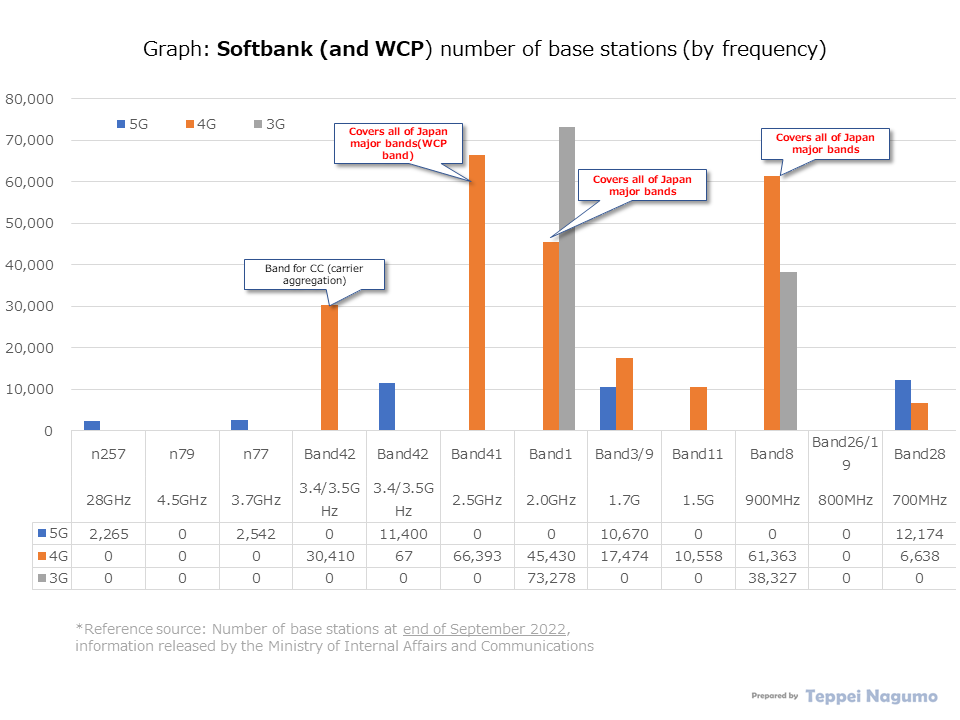
The 2.5GHz band (band 41) has a large number of 4G LTE base stations, approximately 66,000, and covers all of Japan with base stations that perform wireless communication in this band.
The 2.0GHz band (band 1) has a large number of 4G LTE base stations, approximately 46,000, and covers all of Japan with base stations that perform wireless communication in this band.
The 900MHz band (band 8) also has a large number of 4G LTE base stations, approximately 60,000, and covers all of Japan with base stations that perform wireless communication in this band.
Analysis of Rakuten Mobile’s number of radio base stations
Number of Rakuten Mobile base stations (by generation 5G/4G/3G and band)
Below is a graph of information that counts the number of Rakuten Mobile base stations by generation (5G/4G) and wireless band. (See figure below)
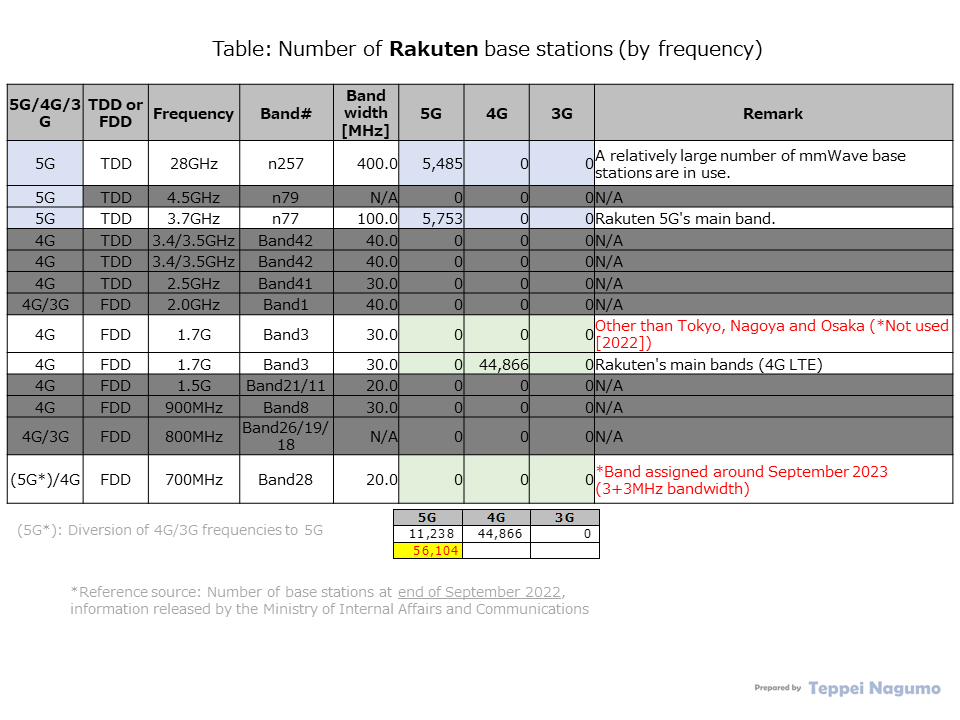
Rakuten Mobile’s number of base stations (by generation 5G/4G/3G and band) graph and its characteristics
Below is a graph showing the number of Rakuten base stations counted by communication method generation (5G/4G) and wireless band. (See figure below)
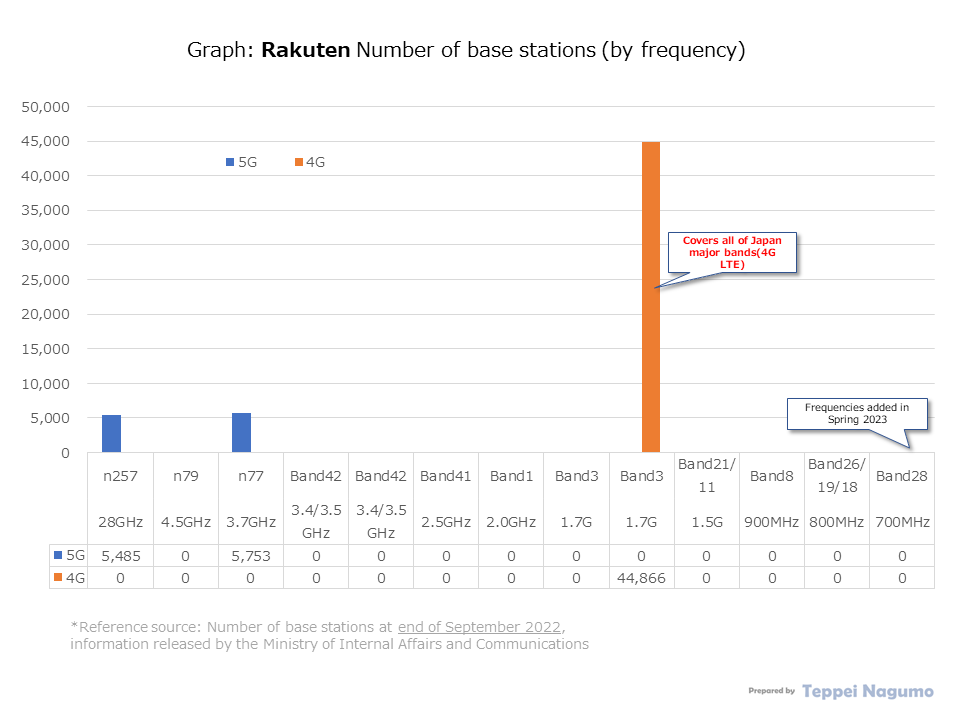
1.7GHz (Band 3) LTE is Rakuten’s main band.
Summary
We have organized the number of base stations in operation for each radio band and communication method (5G NR, 4G LTE, 3G) for each mobile communication carrier in Japan. We have also organized the characteristics of wireless networks for each mobile communications carrier in terms of the number of radio base stations in Japan.
Please refer to the blog post below for Details of radio frequency allocation for mobile communications (diagram showing bandwidth and adjacency relationships) for each Japanese mobile carrier.
Please check the blog post below regarding the bandwidth of each frequency owned by each operator in Japan.
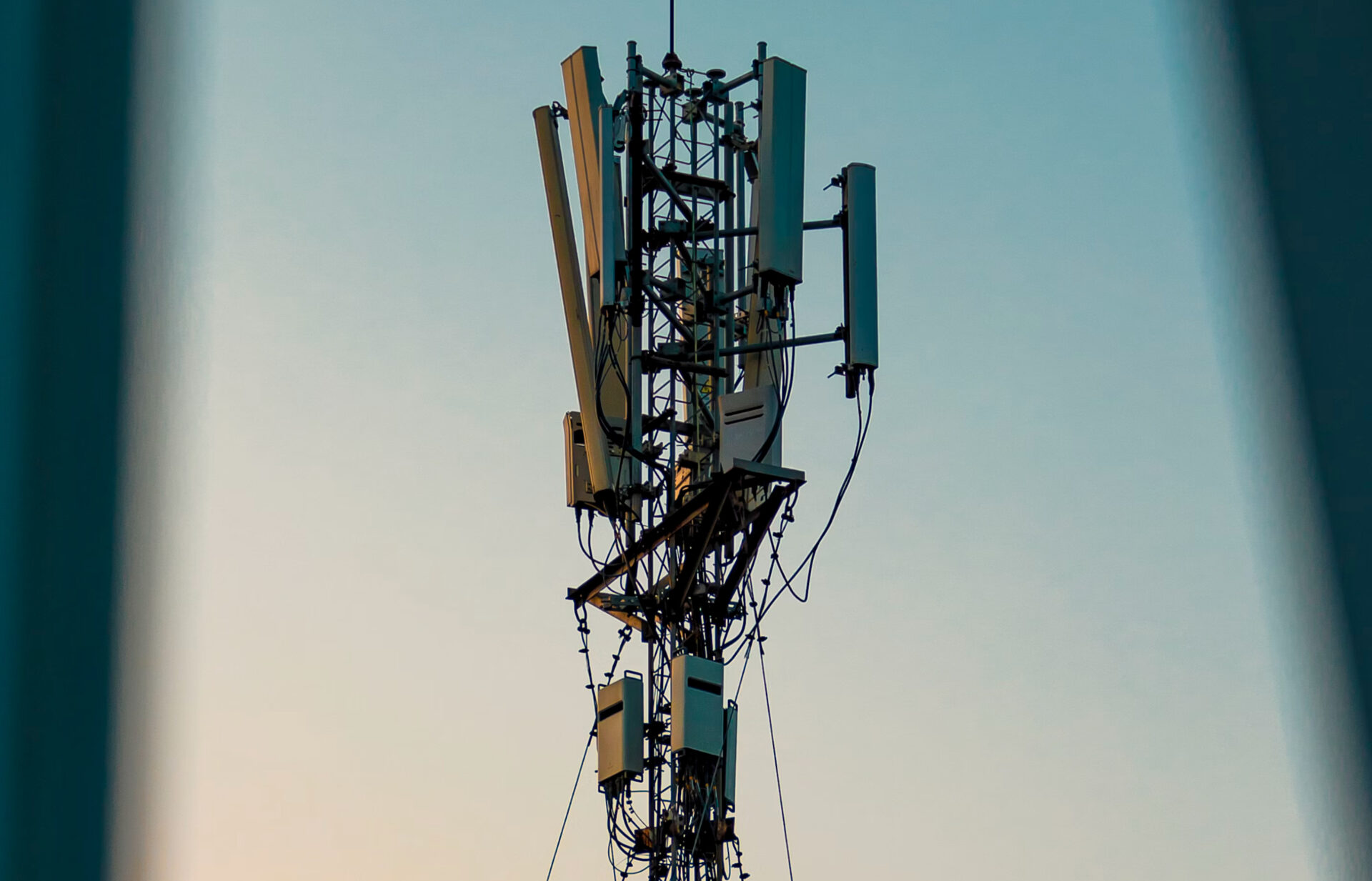





コメント